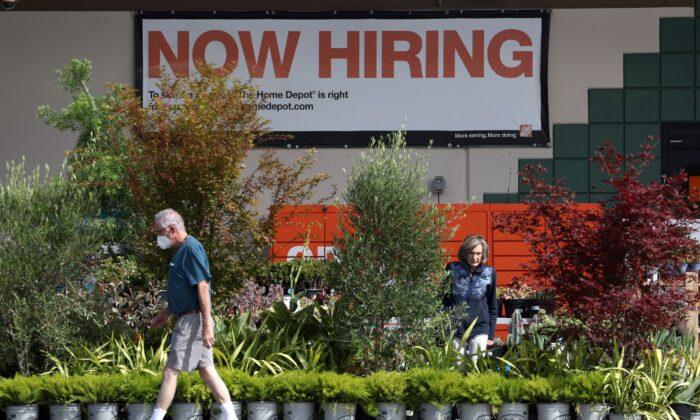The Great Resignation or the Great Unretirement?
A growing number of older Americans are “unretiring” as a cost-of-living crisis, a bear market on Wall Street, and rising interest rates send more people back to the labor market under the stress of diminished living standards.
At the time, it might have made sense to begin an early retirement of, say, fishing and sleeping in late.
After the U.S. government and the Federal Reserve injected trillions of dollars into the marketplace, investment portfolios skyrocketed. Price inflation was much lower than it is today, while the pandemic-induced lockdowns allowed many households to amass between $2–4 trillion in pent-up savings.
This year, economic conditions have drastically changed.
The Consumer Price Index (CPI), a measure of inflation, is north of 8 percent, while grocery store prices have surged about 14 percent. A gallon of gasoline is around $3.70, and utility bills are climbing. U.S. household wealth plunged by about $6 trillion in the second quarter, and more consumers are taking on more debt. The Dow Jones Industrial Average and the Nasdaq Composite Index are down 15 percent and 27 percent, respectively.
Heading Back to the Office
In this new economic landscape, many retirees are choosing to “unretire,” as roughly 1.7 million workers have returned to the job market, according to Department of Labor data analyzed by Indeed.
Others are starting to reconsider their retirement options.
But while financial aspects are notable drivers of older Americans ditching retirement and heading back to work, many also miss everything else associated with work, says Joe Casey, a managing partner of Retirement Wisdom and former vice president at Merrill Lynch.
“I asked people who are retired and they say, ‘I miss the people’ and ’the places that made me step out of my comfort zone,'” he told The Epoch Times, adding that they wanted also to stay sharp and offer some level of contribution.
Many also consider going into careers or adapting to workplace changes while also being enticed by flexibility and higher pay.
“And I have had people change careers and actually enroll in intense coding boot camps,” he said.
So, is it skyrocketing inflation or the lure of the red-hot labor market offering higher wages and flexibility amid tightness?
What About Social Security?
Despite Social Security keeping up with overall inflation, the surging cost of living has eroded 40 percent of the retirement scheme’s purchasing power.The problem some financial experts assert is that the program does not accurately reflect seniors’ spending habits.
However, in August, the CPI for Urban Wage Earners and Clerical Workers (CPI-W) advanced 8.7 percent. But this measurement maintains a greater weight on gasoline and transportation costs, which are more common for workers. Retirees are more affected by rising food, health care, and housing costs.
“That’s the deepest loss in buying power since the beginning of this study by The Senior Citizens League in 2010,” said Mary Johnson, a Social Security policy analyst for The Senior Citizens League, in a statement. “Retirees know all too well that Social Security benefits don’t buy as much today as when they first retired.”
Ultimately, as price inflation becomes sticky and entrenched in the broader U.S. marketplace, it might be a challenge to survive on Social Security benefits in today’s economic climate.





